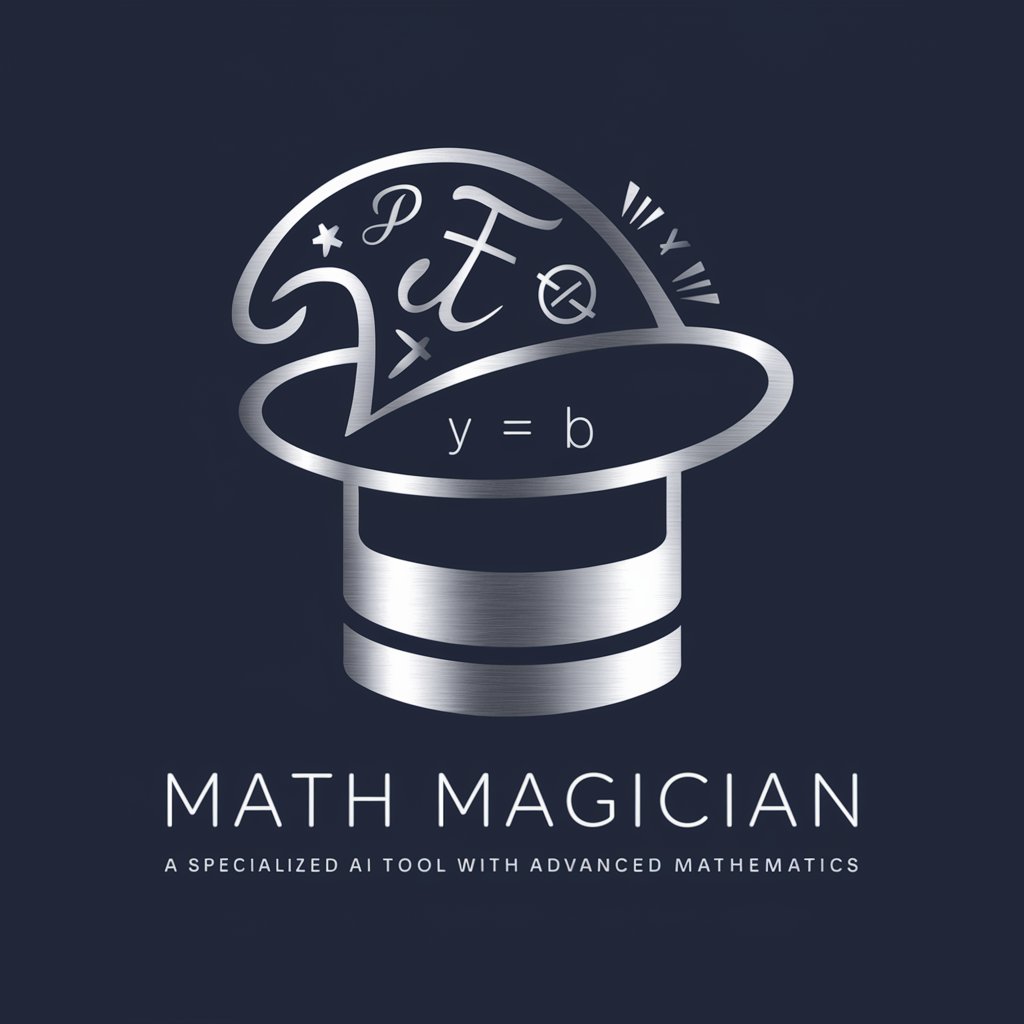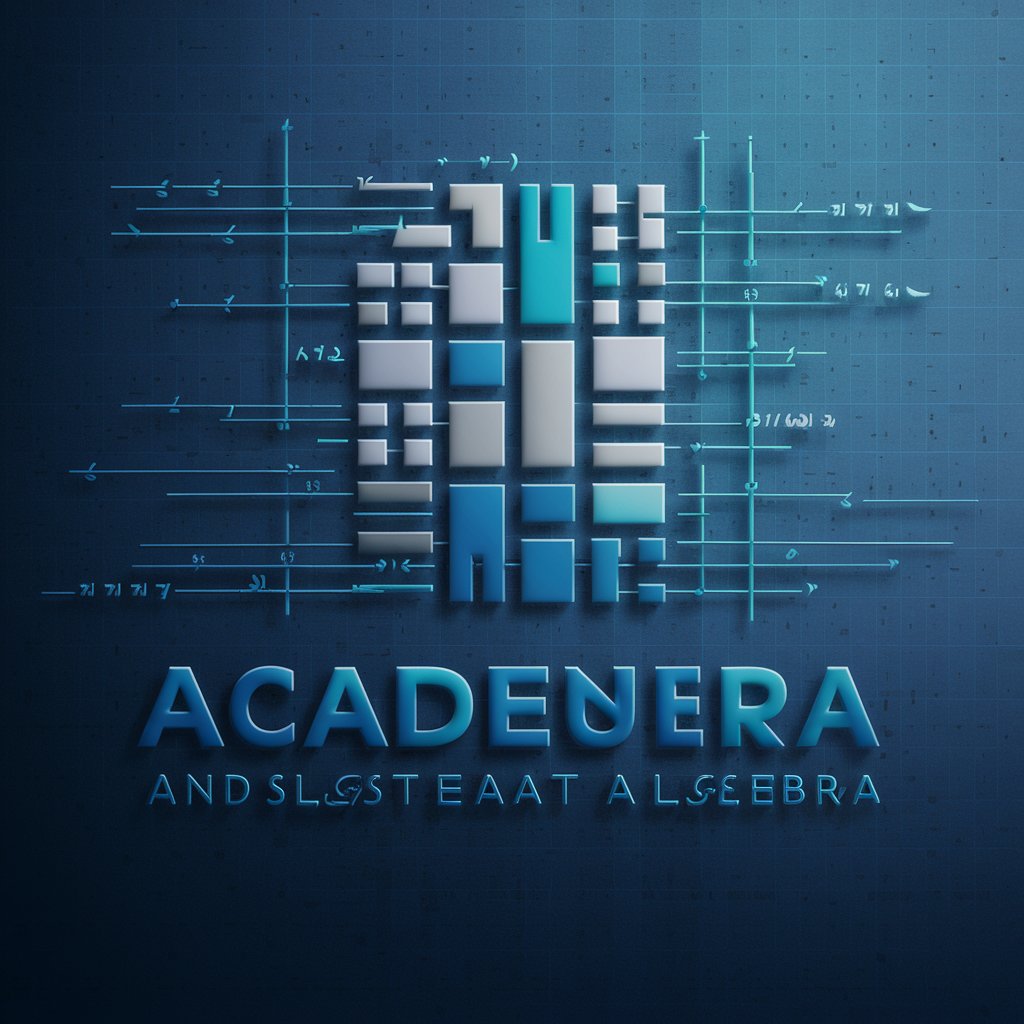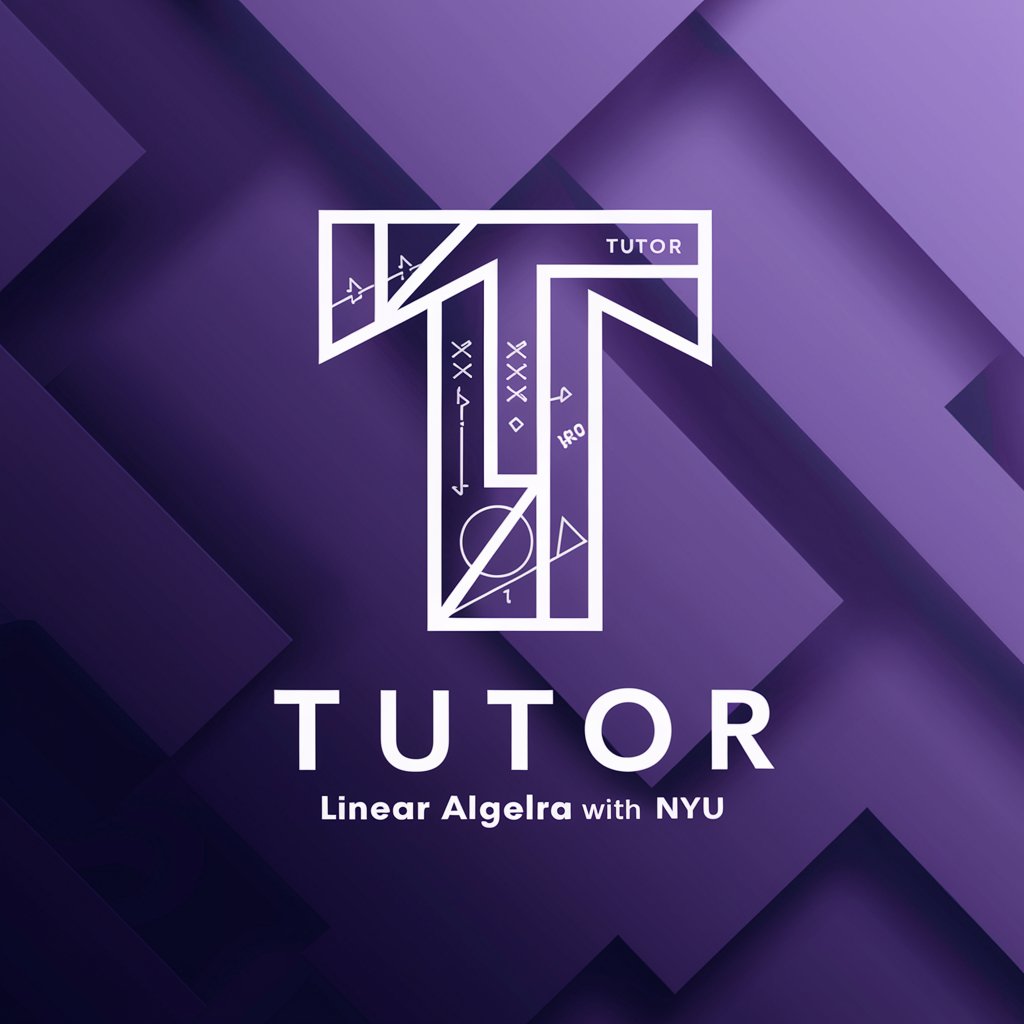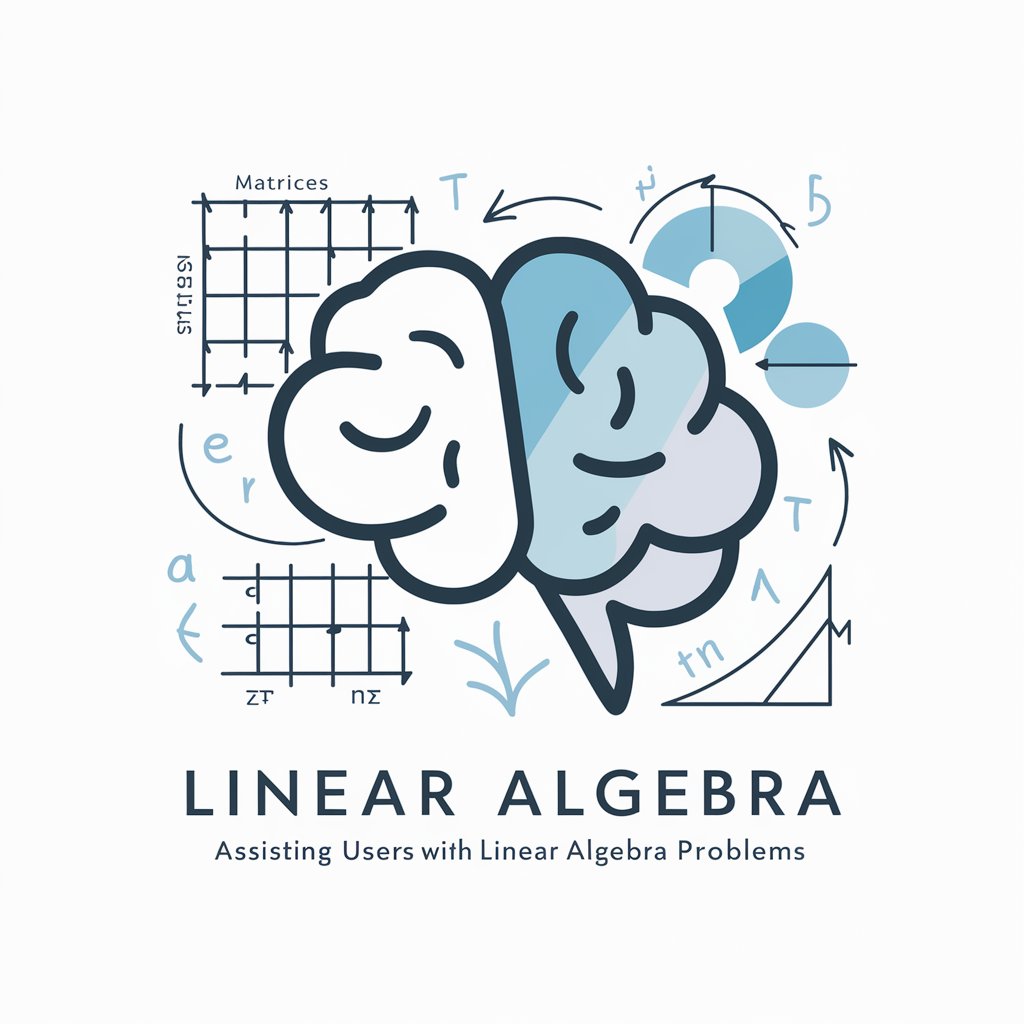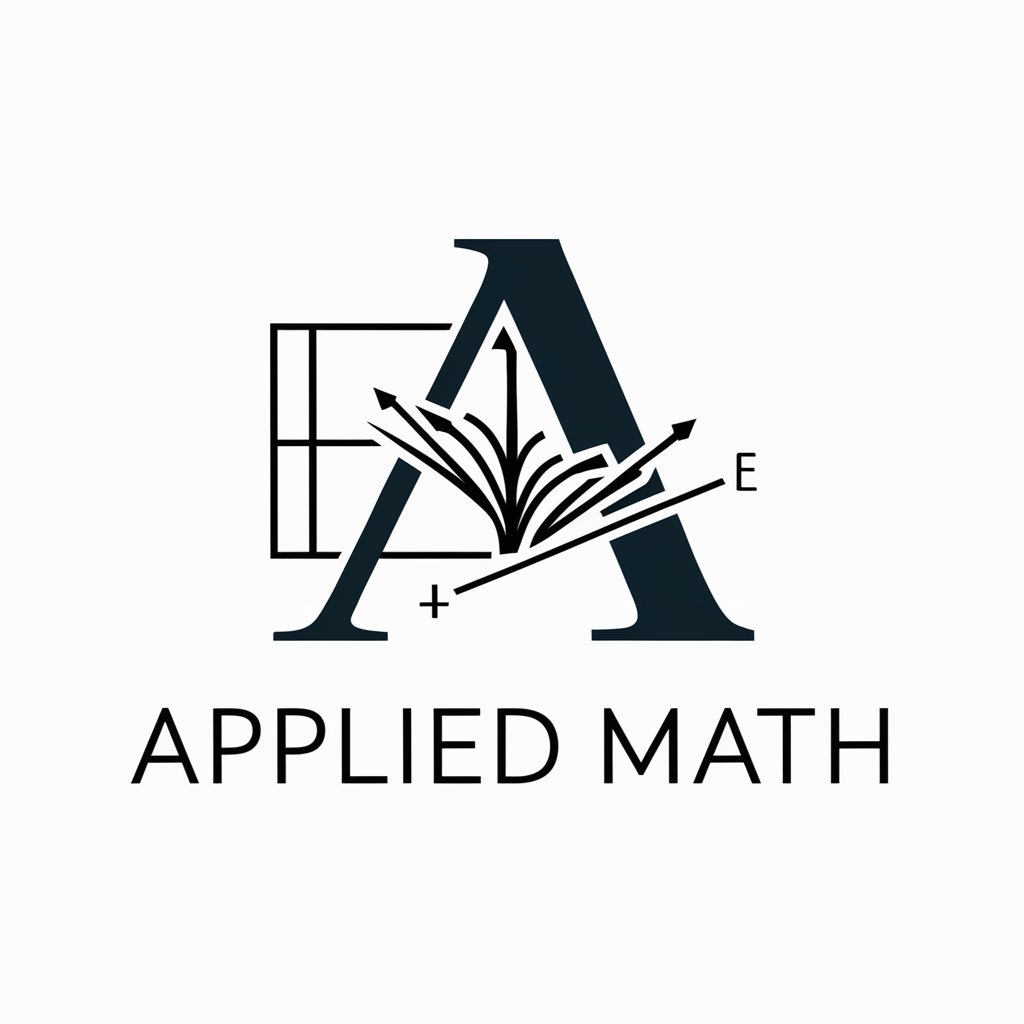
Linear Algebra - Linear Algebra AI Tutor
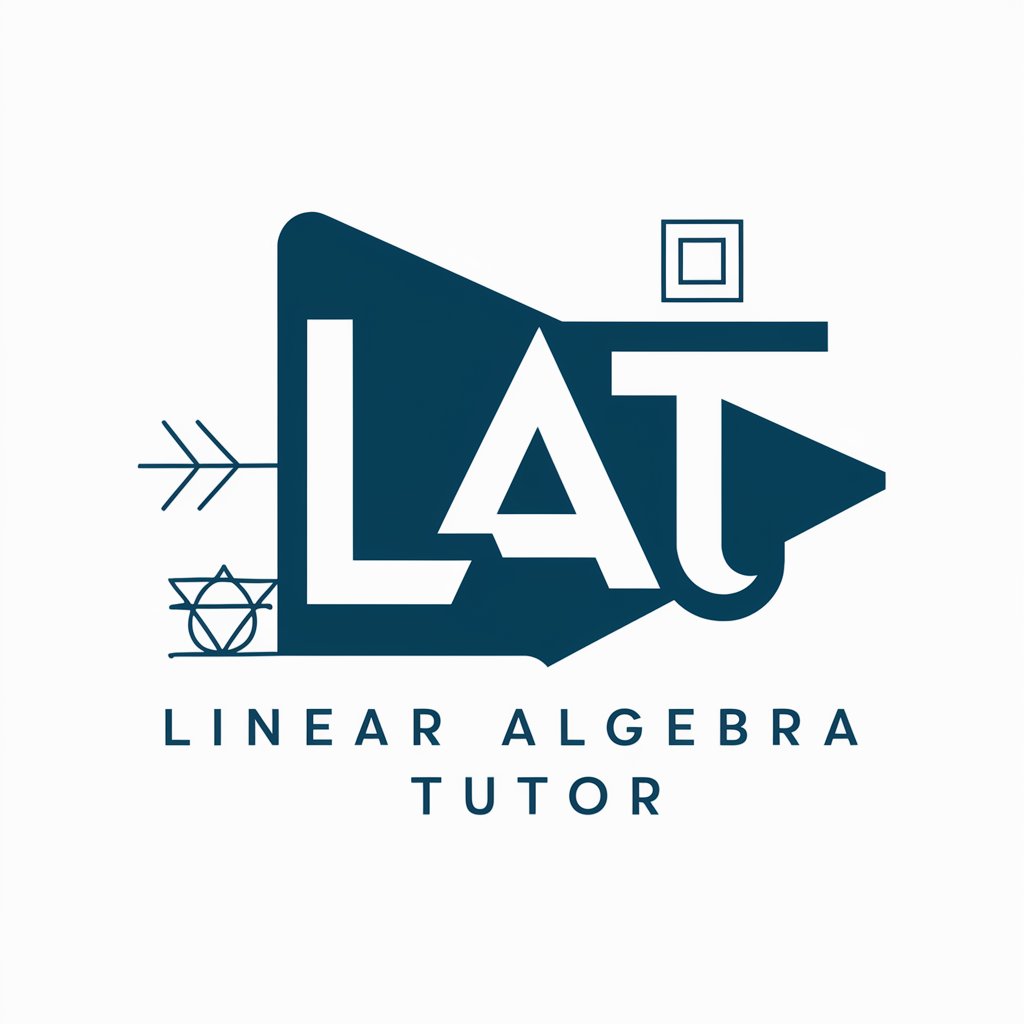
Welcome to Linear Algebra Tutor!
Master Linear Algebra with AI
Explain the concept of eigenvalues and eigenvectors.
How do you find the determinant of a matrix?
What is the significance of the rank of a matrix?
Describe the process of diagonalizing a matrix.
Get Embed Code
Introduction to Linear Algebra
Linear Algebra is a fundamental branch of mathematics focused on the study of vectors, vector spaces (also known as linear spaces), linear transformations, and systems of linear equations. It provides a framework for understanding the structure, dimension, and transformations of vector spaces. Linear Algebra is essential in almost all areas of mathematics and is widely applied in fields such as physics, engineering, computer science, economics, and statistics. For example, in computer graphics, vectors and matrices are used to manipulate images by rotation, scaling, and translation. In statistics, data points can be considered as vectors in a high-dimensional space, where Linear Algebra is used to perform operations such as calculating the covariance matrix or performing principal component analysis. Powered by ChatGPT-4o。

Main Functions of Linear Algebra
Matrix Operations
Example
Matrix multiplication, determinant calculation, and matrix inversion.
Scenario
In robotics, matrix operations are used to describe the positions and movements of robots. For instance, matrix multiplication can combine rotations and translations into a single operation, facilitating complex movements in 3D space.
Solving Systems of Linear Equations
Example
Using Gaussian elimination or matrix methods like LU decomposition.
Scenario
This is crucial in engineering to solve equilibrium problems where forces and moments are balanced. Engineers use these methods to determine unknown forces and displacements in structures and machinery.
Eigenvalues and Eigenvectors
Example
Finding principal components in a dataset, or the natural frequencies and modes of a physical system.
Scenario
In finance, eigenvectors and eigenvalues are used in portfolio theory to determine the principal components of the variance in portfolios, helping to optimize risk.
Vector Spaces
Example
Basis, dimension, and subspaces.
Scenario
In computer science, vector spaces are used in search engines to semantically analyze and compare the content of different documents, improving search accuracy and relevance.
Ideal Users of Linear Algebra
Engineers
Engineers use Linear Algebra to model physical systems, analyze structures, and simulate electronic circuits and control systems. Understanding vectors and matrices helps them to design more efficient systems and solve problems involving multiple variables and constraints.
Data Scientists
Data scientists apply Linear Algebra to handle large datasets, perform machine learning algorithms, and create models for predictive analytics. Techniques such as singular value decomposition or eigen decomposition are fundamental in reducing dimensionality and improving algorithm performance.
Economists
Economists use Linear Algebra to model economic behavior, forecast economic trends, and analyze systems of economic demand and supply. Matrix concepts are used to describe and solve linear optimization problems in resource allocation.
Academic Researchers
Academic researchers in mathematics, physics, and other sciences use Linear Algebra to formulate theories, conduct experiments, and analyze data. It provides them with tools to abstract complex systems and find solutions to research questions involving linear relationships.

Guidelines for Using Linear Algebra
Start with Yeschat.ai
Begin your journey in Linear Algebra by visiting yeschat.ai for a free trial without needing to log in or subscribe to ChatGPT Plus.
Understand the basics
Familiarize yourself with fundamental concepts like vectors, matrices, and linear transformations. These are essential for grasping more complex topics.
Apply to real-world problems
Use Linear Algebra to solve real-world problems such as systems of equations in engineering, computer graphics, and data analysis.
Utilize software tools
Leverage software and tools designed for Linear Algebra to visualize concepts and solve problems efficiently. Examples include MATLAB, NumPy, and various Linear Algebra libraries.
Practice regularly
Consistently solve problems and apply Linear Algebra concepts to different scenarios to deepen understanding and improve proficiency.
Try other advanced and practical GPTs
Convo-AI
Your AI partner for insightful problem-solving.
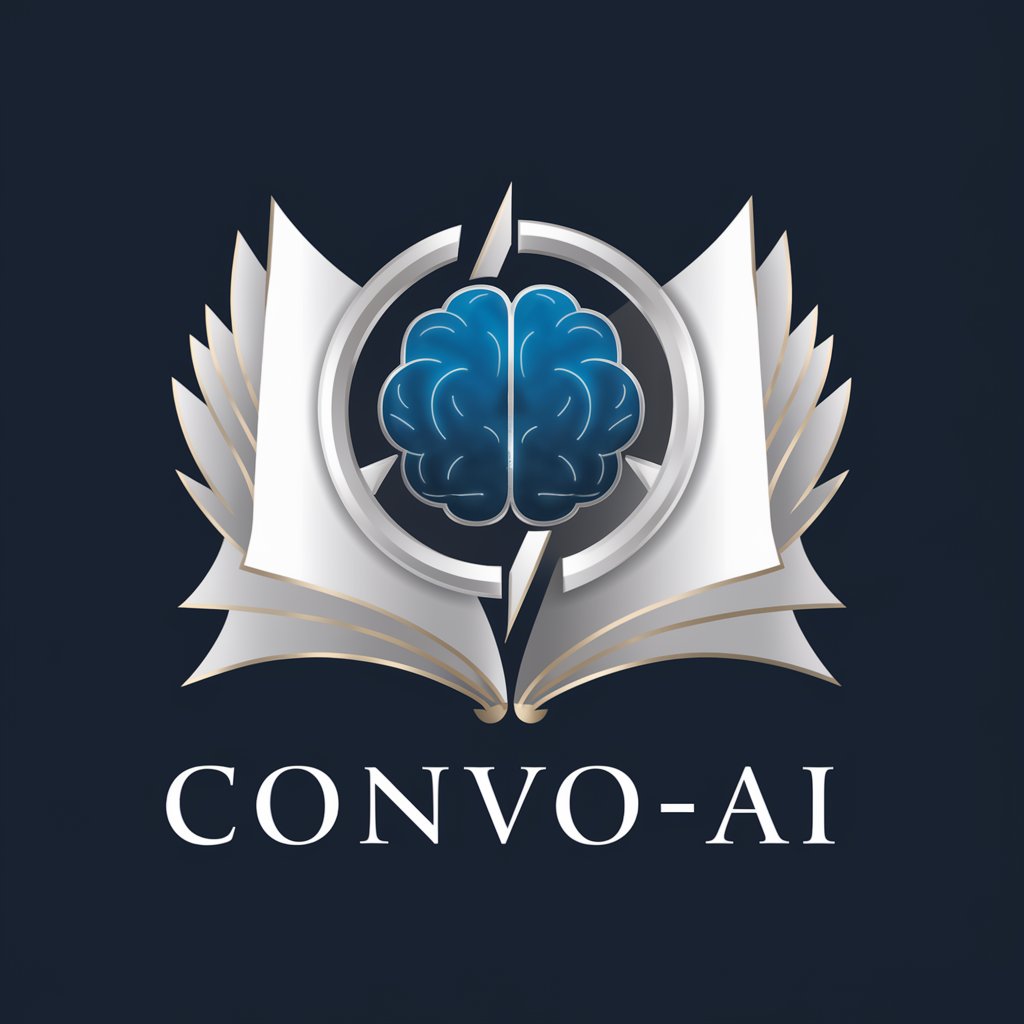
Rad Workforce Guru
Optimize your contingent workforce efficiently.
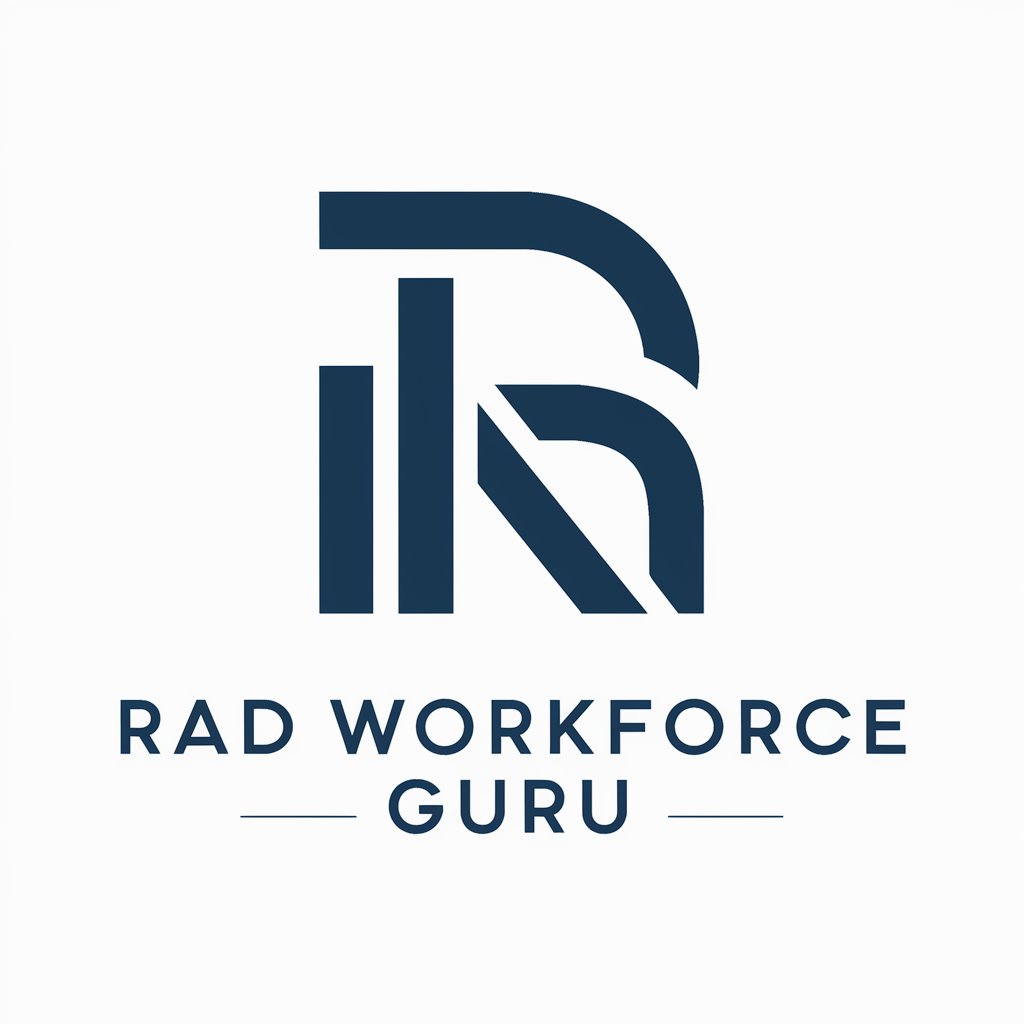
Instant “12-Step Foolproof Sales Letter” Creator
AI-powered sales persuasion

Master of GCode
AI-Powered Precision Machining

Machining Master
Powering Precision with AI

Tarot Reader
AI-powered tarot card interpretations for insight.

Algebra
AI-Powered Solutions for Your Tasks
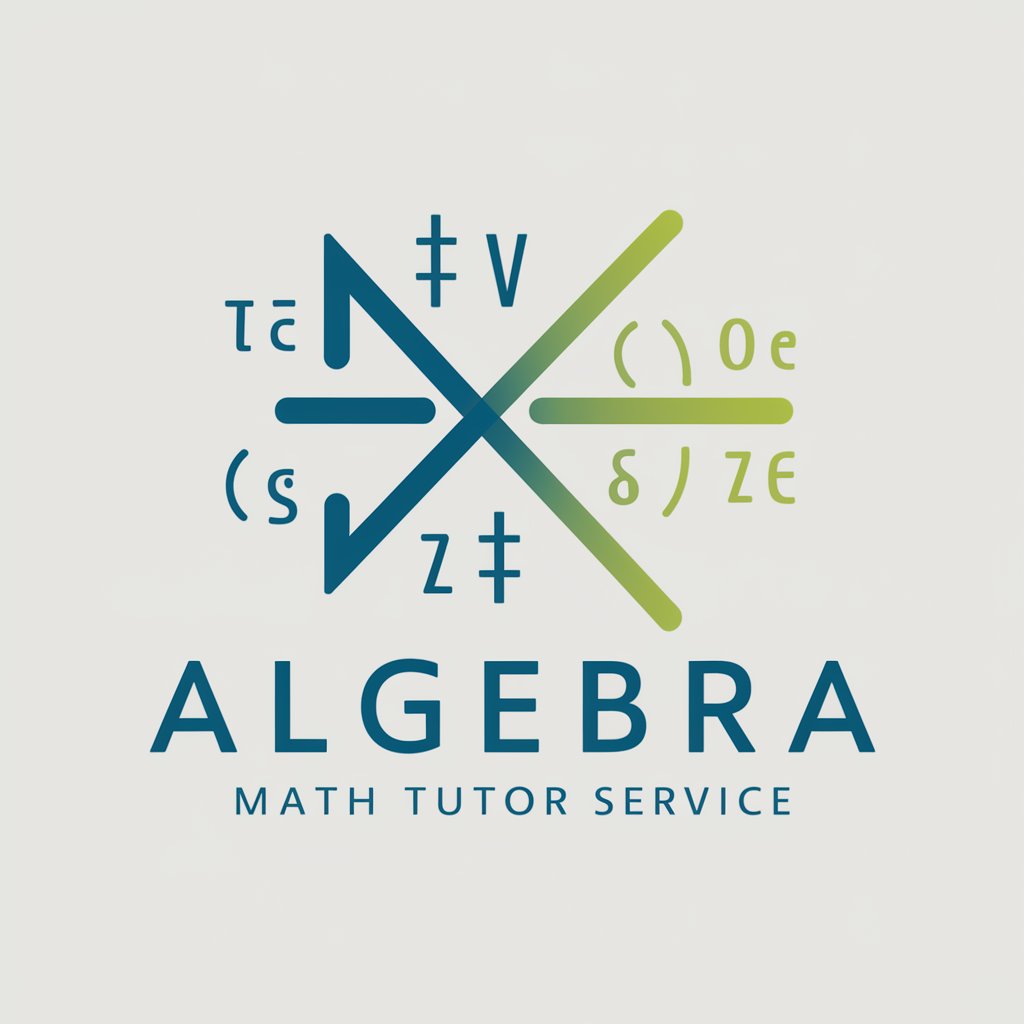
مشاور گرین کارت از طریق NIW
Your AI NIW Green Card Advisor

Jenkins
Automate your development with AI

Playdate Lua
Craft games on a novel handheld.

Bible and Strongs Expert with Covenant Theology
Discover Biblical Truths with AI

PMP Prep Pro
Master PMP with AI Guidance
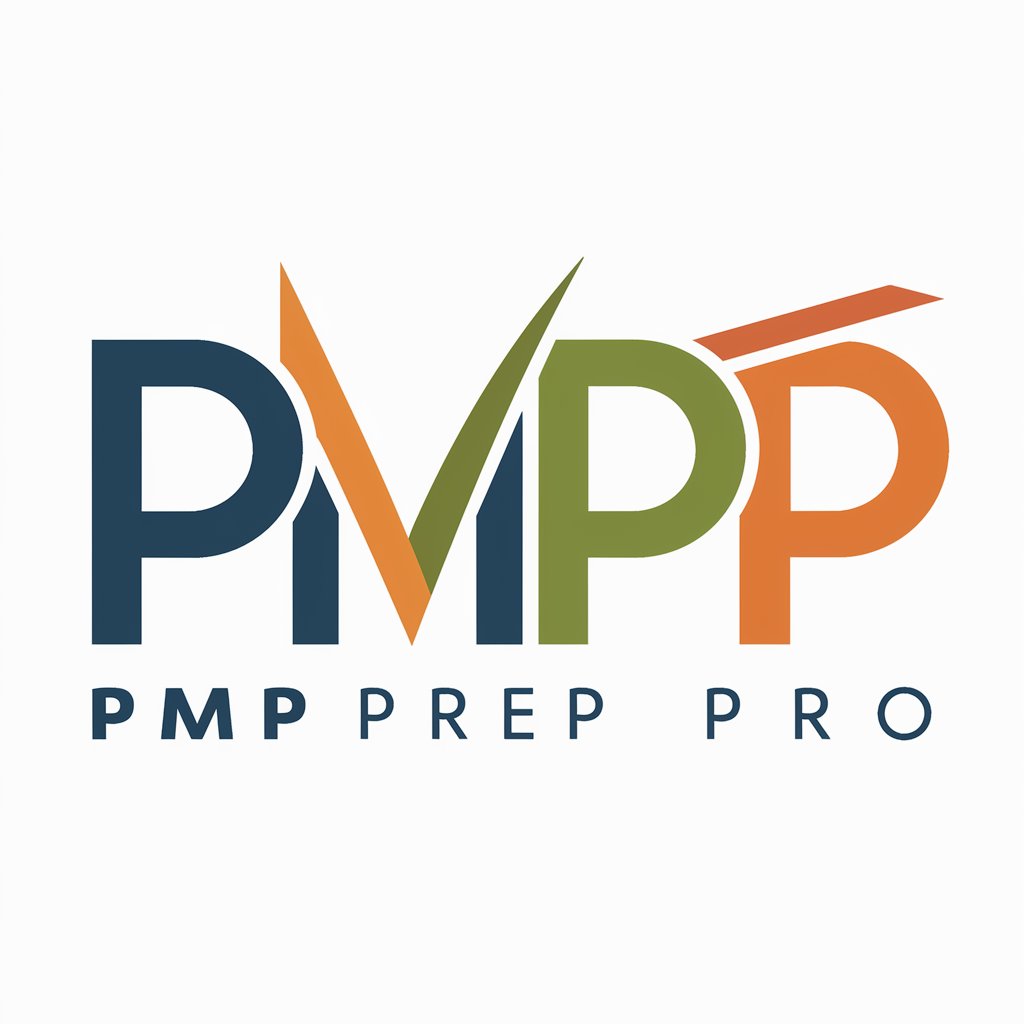
Detailed Q&A on Linear Algebra
What is the significance of eigenvalues and eigenvectors in Linear Algebra?
Eigenvalues and eigenvectors are fundamental in characterizing linear transformations. They are critical in fields such as quantum mechanics, stability analysis, and principal component analysis in statistics.
How does Linear Algebra apply to machine learning?
Linear Algebra is vital for machine learning, particularly in the optimization of algorithms, understanding data structures, and enabling operations such as transformations and decompositions that are essential for algorithms like support vector machines and principal component analysis.
Can Linear Algebra be used to optimize network performance?
Yes, network theory often uses matrices to represent connections. Linear Algebra helps in analyzing connectivity, calculating shortest paths, and optimizing network flows.
What role does Linear Algebra play in computer graphics?
It's crucial for transformations, rendering, and handling of 3D models. Operations such as rotations, scaling, and translations are performed using matrix multiplications.
How does one solve systems of linear equations using Linear Algebra?
Systems of linear equations can be solved using methods like Gaussian elimination, which transforms the matrix into row echelon form, or through matrix inversion and determinant calculation where applicable.

